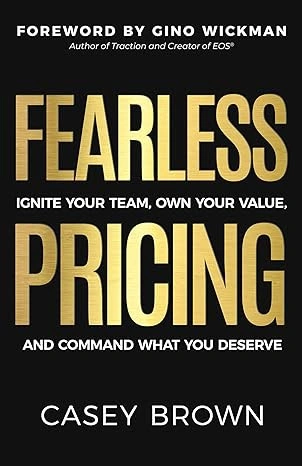Supply chains are being hit hard. Most manufacturers are having a hard time getting basic materials – wood, metal, plastic, etc. They are raising their prices. Airline prices for flights have gone up drastically too.
So, you HAVE to raise yours too – why would you take less profit?
If your costs go up, those costs have to be passed on to your customers. You are NOT making more profit. You are keeping the same profit.
Even worse, some companies believe in loss leaders – products or services that you sell to a customer for less than the cost of making that product or service. This belief may come from supermarkets who are famous for loss leaders – enticements to get you in the store, knowing that is unlikely that you will leave only with those loss leaders.
As a small business owner you can’t afford loss leaders – unless the profitability of your other products and services are so great that you can overcome the loss.
First, let’s look at what cost really is. For products, it is the direct cost of making the product (labor, materials, etc.) plus the piece of overhead assigned to that product. Every product you make and sell, or buy and resell, must have a sales price high enough to pay for your company’s overhead (rent, utility bills, gas, and other business costs you have even if you don’t sell anything).
Many direct selling companies have a suggested retail price which is higher than the cost of the product they sell you. The difference between the two is gross profit. You have to subtract your overhead costs from the gross profit to earn net profit. Can you sell enough products to cover your overhead costs?
For services, total cost is the cost of providing the service (labor and materials) plus overhead costs. Some service companies have no material costs and simply provide people to perform projects. Service companies do have overhead costs.
Now let’s look at the lost leader misconception. If you discover that your product costs $100 to produce including overhead, and you are selling it for $90, you are losing $10 for each product you sell. Assume that you sell 20 products per month. Your monthly loss on this product is $200.
Here’s the misconception. You think that you just need to increase revenue by $200 to cover this loss. That’s not true.
If your net operating profit is 10%, you have to generate $2,000 in other sales just to make up for this loss.
If your net operating profit is 5%, you have to generate $4,000 in other sales just to make up for this loss.
It’s even worse for projects. Most projects don’t lose just $10 per project. They can lose thousands of dollars.
Assume that you lost $1,000 on a project and that your net operating profit is 10%. You have to sell an additional $10,000 in projects just to make up for that loss. If your net operating profit is 5%, you have to sell an additional $20,000 in projects just to make up for that loss on one project.
Losses are expensive!
Before you think about loss leaders or increased costs from your suppliers, determine how much more you have to sell (on top of your current sales projections) just to make up the losses.
Is it worth it?
How financially fit is your business?
Click here to take this one minute assessment.

Books/Audios that could help your business and you.
Casey Brown makes an interesting case for whether you should raise prices and how to raise prices if you decide to do so. She has implemented what she suggests in the book and gives you stories from companies she has helped change their pricing strategy.
Click here to order on Amazon
